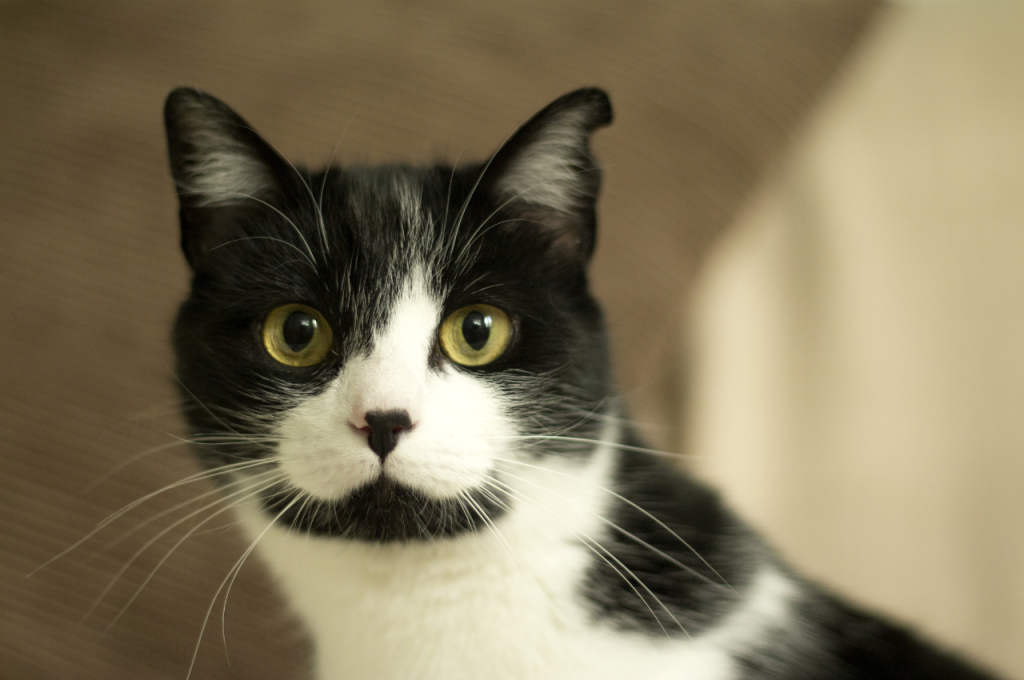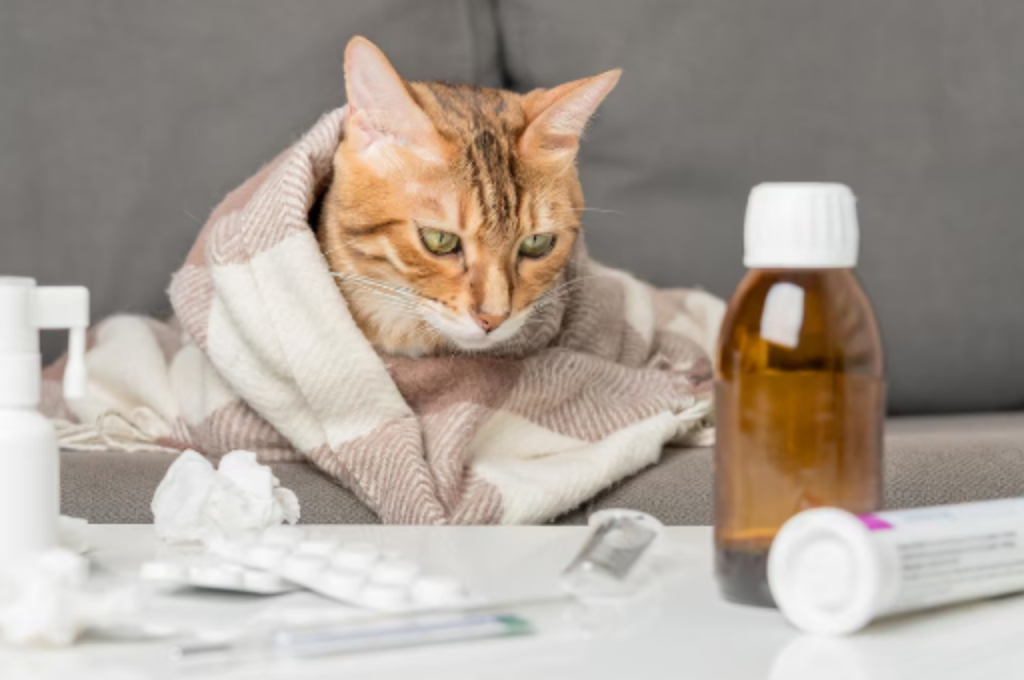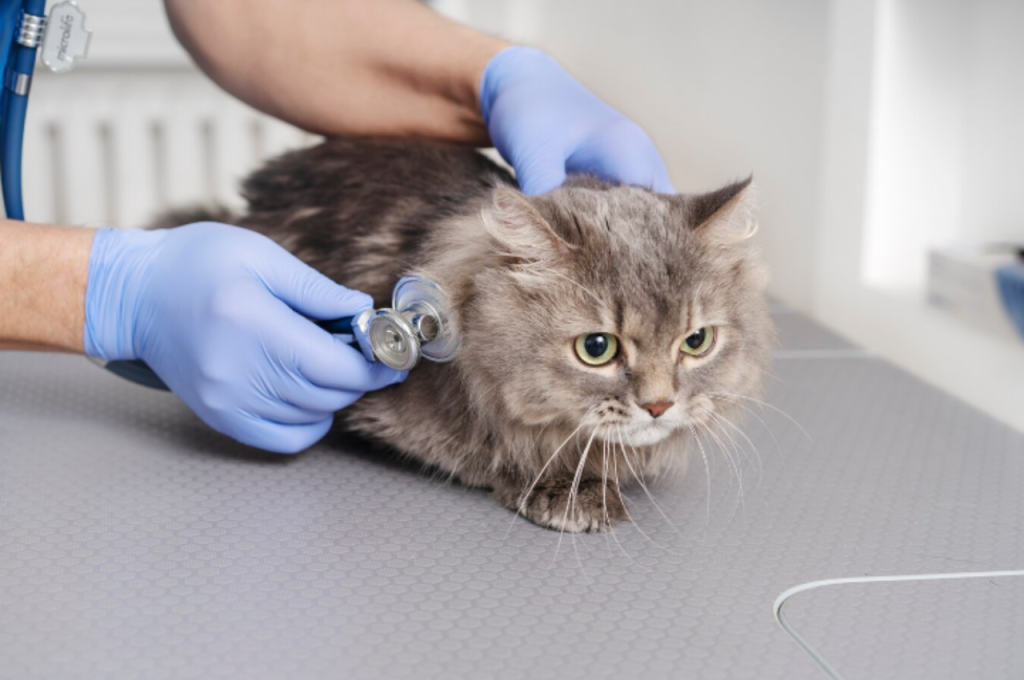A common infectious cat disease is feline respiratory disease. This disease is highly contagious and can spread easily among cats.
Feline respiratory disease is caused by a variety of viruses and bacteria, including feline herpesvirus and feline calicivirus. Symptoms of the disease include sneezing, coughing, and discharge from the eyes and nose. In severe cases, cats may also experience fever and loss of appetite. It is important for cat owners to vaccinate their pets against feline respiratory disease and to keep them away from infected cats. Additionally, maintaining good hygiene practices, such as washing hands after handling cats and regularly cleaning litter boxes and bedding, can help prevent the spread of the disease. Prompt treatment is also important in managing the symptoms and preventing complications.
Feline Infectious Mysteries
Feline infectious diseases remain one of the most intriguing and complex aspects of veterinary science. Cats can contract a variety of viral, bacterial, and parasitic infections, some of which are specific to felines while others can affect multiple species. Common infectious diseases in cats include Feline Leukemia Virus (FeLV), Feline Immunodeficiency Virus (FIV), and Feline Infectious Peritonitis (FIP). These infections often present with subtle symptoms, making early detection challenging.

Proper vaccination, regular vet visits, and maintaining good hygiene are essential to help protect cats from these diseases. Understanding the nature of these infections and their transmission can greatly improve preventive care and overall feline health. The mysteries of how these diseases evolve and spread remain an ongoing focus of veterinary research.
Symptoms To Watch For
Feline infectious diseases can manifest in a variety of symptoms, making it crucial for cat owners to be vigilant. Common symptoms include lethargy, loss of appetite, fever, coughing, sneezing, and nasal discharge. Additionally, watch for eye or mouth ulcers, vomiting, diarrhea, and difficulty breathing.
Transmission And Spread
The transmission and spread of feline infectious diseases can occur through direct contact with infected cats, as well as through exposure to their urine, feces, or saliva. Indirect transmission may also occur via contaminated food bowls, bedding, or grooming tools. Outdoor cats, multi-cat households, and kittens with developing immune systems are particularly susceptible to contracting and spreading these diseases.
Common Culprits Of Cat Illness
Feline Leukemia Virus (felv)
Feline Leukemia Virus (FeLV) is a common and contagious infectious disease in cats. It can be transmitted through close contact with infected cats, such as mutual grooming or sharing food and water bowls. Outdoor cats are at a higher risk of contracting FeLV due to exposure to infected cats and contaminated environments.
Feline Immunodeficiency Virus (fiv)
Feline Immunodeficiency Virus (FIV) is another prevalent infectious disease that affects cats. It spreads primarily through bite wounds from infected cats during aggressive encounters or mating. Indoor and outdoor cats can contract FIV, but outdoor cats are more susceptible due to increased exposure to potential carriers.
Feline Upper Respiratory Infections
Feline Upper Respiratory Infections (URI) are common infectious diseases that affect cats, similar to the common cold in humans. These infections are highly contagious and can be caused by various viruses and bacteria. The most prevalent viruses responsible for URI in cats are Herpesvirus and Calicivirus.
Herpesvirus
Herpesvirus, also known as feline viral rhinotracheitis (FVR), is a highly contagious virus that causes severe respiratory symptoms in cats. Symptoms of feline herpesvirus include sneezing, nasal discharge, and conjunctivitis.
Calicivirus
Calicivirus is another common cause of URI in cats. This virus can lead to symptoms such as oral ulcers, fever, sneezing, and nasal discharge. It can also result in more severe conditions such as pneumonia.
Managing And Treating Uri
Managing and treating feline upper respiratory infections involves supportive care to alleviate symptoms and prevent secondary bacterial infections. This includes providing a warm and comfortable environment, ensuring proper nutrition, and keeping the affected cat well-hydrated.
Panleukopenia: Feline Distemper
Panleukopenia, also known as feline distemper, is a common infectious cat disease. It is caused by a virus and can lead to severe symptoms such as fever, vomiting, and diarrhea. Vaccination is essential to prevent the spread of this disease among cats.
Virus Lifecycle And Impact
Panleukopenia, commonly known as Feline Distemper, is a highly contagious viral disease that affects cats. The virus responsible for this disease is called feline parvovirus. It is a small, non-enveloped virus that is extremely resilient and can survive in the environment for months to years, making it a significant threat to unvaccinated cats.
Once a cat comes into contact with the virus, it enters the body through the mouth or nose. From there, it replicates rapidly in the lymphoid tissues, including the bone marrow, leading to a decrease in white blood cells, a condition known as panleukopenia. This weakens the cat’s immune system, making them susceptible to secondary infections. The impact of panleukopenia can be severe. Cats may develop symptoms such as fever, lethargy, loss of appetite, vomiting, diarrhea (often with blood), and dehydration. In some cases, the disease can progress rapidly and be fatal, especially in young kittens or cats with compromised immune systems.
Prevention Via Vaccination
Vaccination is the most effective way to prevent panleukopenia in cats. The feline distemper vaccine, which is a core vaccine, provides long-lasting immunity against the virus. It is typically administered as a combination vaccine that also protects against other common feline diseases, such as feline viral rhinotracheitis and calicivirus. The vaccine works by introducing a modified or inactivated form of the virus into the cat’s body.

This stimulates the immune system to produce protective antibodies. If the cat is later exposed to the actual virus, these antibodies will recognize and neutralize it, preventing infection. It is crucial to follow a vaccination schedule recommended by a veterinarian to ensure adequate protection against panleukopenia. Kittens usually receive their initial vaccination series starting at around 6-8 weeks of age, with booster shots given every 3-4 weeks until they are around 16 weeks old. Adult cats require regular booster vaccinations to maintain their immunity.
In conclusion, panleukopenia, or Feline Distemper, is a highly contagious viral disease that can have severe consequences for cats. However, through proper vaccination and adherence to a recommended vaccination schedule, cat owners can protect their feline companions from this dangerous infection. Regular veterinary check-ups and discussions about vaccination protocols are essential to ensure the health and well-being of cats.
Cat Scratch Disease
Cat Scratch Disease is a common infectious illness caused by bacteria transmitted from cats to humans through scratches or bites. Symptoms include fever, swollen lymph nodes, and fatigue. It’s important to seek medical attention if you suspect you have this disease.
Bartonella henselae Bacterium
Cat Scratch Disease is a common infectious disease that affects cats and can be transmitted to humans. This disease is caused by the bacteria Bartonella henselae, which is found in the saliva of infected cats. Humans can contract Cat Scratch Disease through a bite or scratch from an infected cat, or even through contact with the cat’s fur. While Cat Scratch Disease is typically a mild illness in humans, it can cause serious complications in people with weakened immune systems.
Implications for Human Health
Cat Scratch Disease can cause a range of symptoms in humans, including fever, fatigue, and swollen lymph nodes. In some cases, the disease can cause more severe symptoms, such as neuroretinitis, a condition that can lead to blindness if left untreated. It is important to seek medical attention if you suspect you or a loved one may have been infected with Cat Scratch Disease. Your healthcare provider can help you determine the best course of treatment and monitor any potential complications.
In conclusion, Cat Scratch Disease is a common and often mild infectious disease that can be transmitted from cats to humans. While the disease is typically not serious, it is important to take precautions to avoid infection and seek medical attention if you suspect you may have been infected.
Preventive Measures And Treatments
Preventive measures and treatments are crucial for managing common infectious cat diseases. One such disease is feline leukemia, which can be prevented through vaccination and minimizing exposure to infected cats. Early detection and prompt treatment are vital for improving the prognosis of affected cats.
Regular Veterinary Check-ups
- Regular veterinary check-ups are essential to monitor your cat’s health.
- Vaccinations can prevent common infectious cat diseases.
- Early detection of diseases can lead to effective treatment.
Creating A Safe Environment
- Keep your cat indoors to prevent exposure to infected animals.
- Provide a clean litter box and fresh water daily.
- Regularly clean your cat’s bedding and toys to avoid germ buildup.
Understanding Zoonotic Risks
Zoonotic risks involve understanding common infectious diseases in cats. One such disease is feline leukemia virus (FeLV), which can be transmitted to other cats and, in rare cases, to humans. Understanding these risks is essential for preventing the spread of diseases between animals and humans.
Cats are beloved pets and excellent companions, but they can carry certain diseases that can be passed on to humans. These diseases are known as zoonotic diseases and can be transmitted through bites, scratches, or contact with infected bodily fluids. One of the most common infectious cat diseases is called toxoplasmosis.
Protecting Human Family Members
Toxoplasmosis is caused by a parasite known as Toxoplasma gondii, which is found in the feces of infected cats. While healthy people may not experience any symptoms, those with weakened immune systems, pregnant women, and young children are at a higher risk of contracting the disease. To protect human family members, it is important to ensure that cats are kept indoors to prevent them from hunting and coming into contact with infected animals. Regular visits to the veterinarian and proper vaccination are also essential in preventing the spread of infectious diseases.

Hygiene And Disease Control
Good hygiene practices can go a long way in preventing the transmission of infectious diseases from cats to humans. Washing hands thoroughly with soap and water after handling cats, their litter boxes, or any contaminated surfaces is critical. It is also important to clean and disinfect litter boxes regularly and to wear gloves when doing so. In addition, avoiding contact with a cat’s feces during pregnancy is advised as it can cause birth defects in newborns.
In conclusion, understanding the zoonotic risks associated with cats is crucial for protecting both feline companions and human family members. By following good hygiene practices, ensuring proper vaccination and veterinary care, and keeping cats indoors, we can reduce the risk of contracting infectious diseases and enjoy the many benefits of cat ownership.
Conclusion
To wrap up, understanding common infectious cat diseases is essential for every cat owner. By being aware of the signs, symptoms, and preventive measures, you can ensure the health and well-being of your feline companion. Regular veterinary check-ups, vaccinations, and maintaining a clean environment are crucial in minimizing the risk of these diseases.
Remember, a healthy cat is a happy cat! Stay informed and take proactive measures to keep your furry friend safe.
